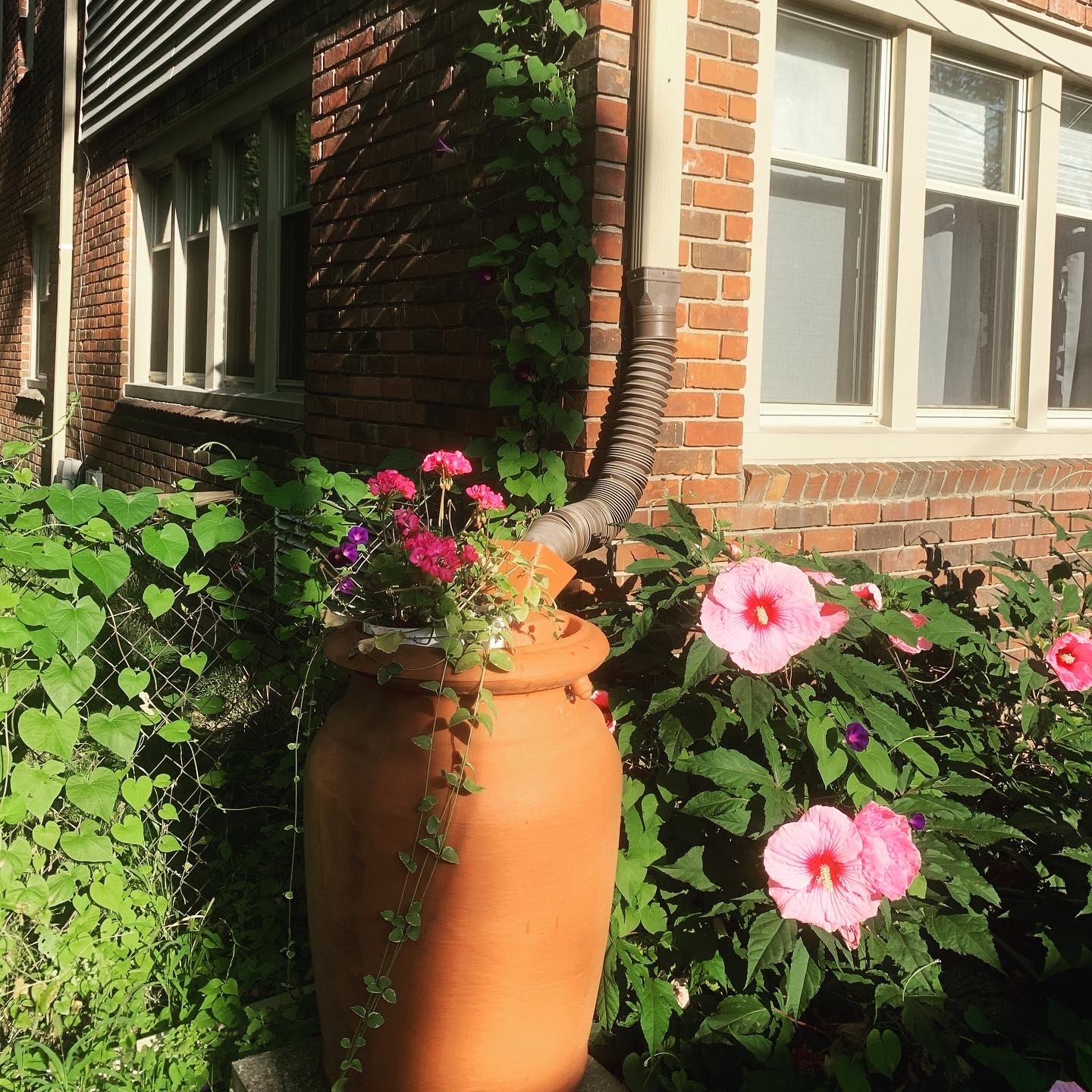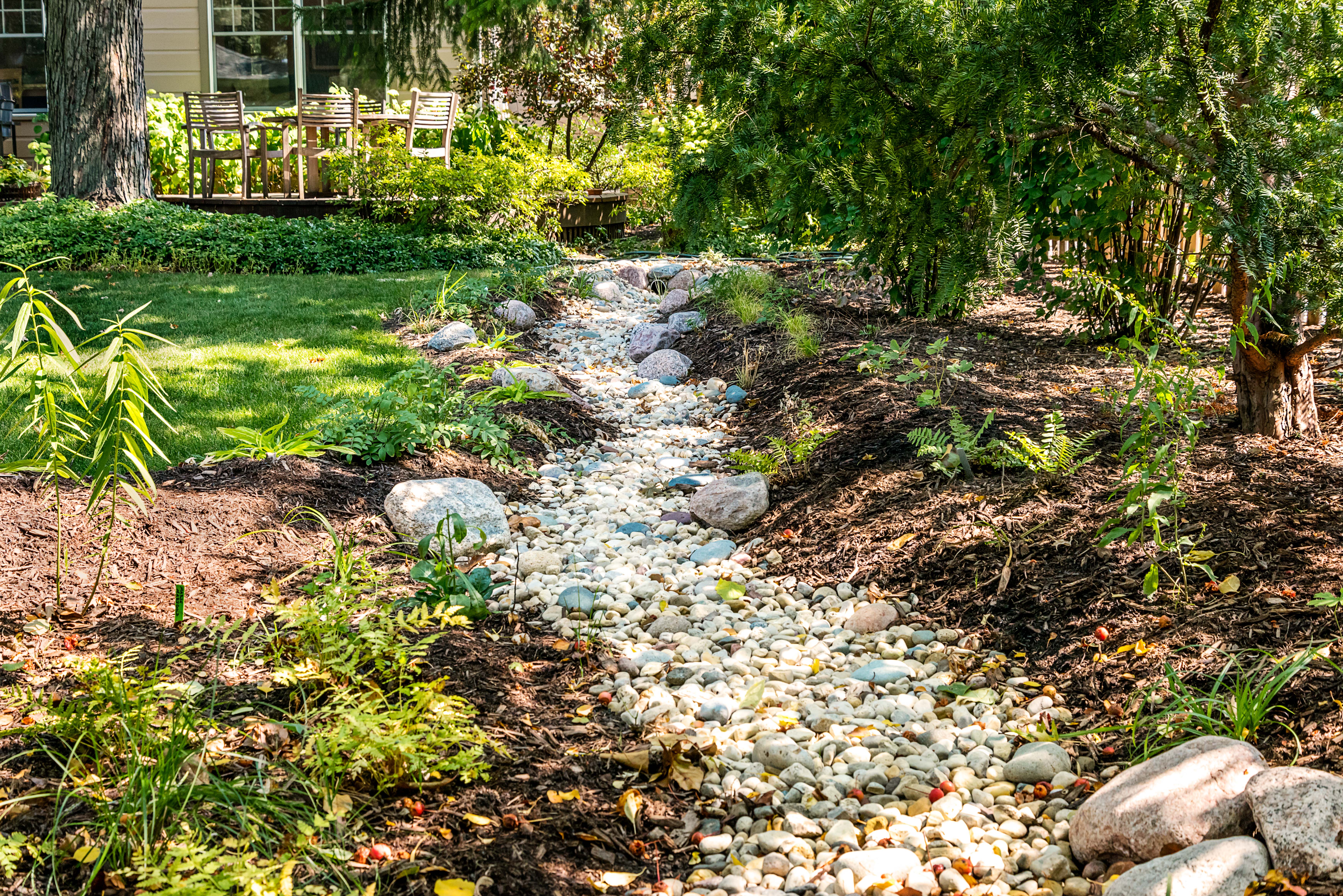
Smart Shorelands: Stormwater Solutions for Protecting Your Waterfront
DOWNLOADJanuary 4, 2024 - Bindu Bhakta, Michigan State University Extension
No matter where you live, stormwater is everyone’s problem. Rain and melting snow that is unable to soak into the soil is called stormwater. When precipitation hits a hard surface such as a rooftop, roadway, concrete patio or even a compacted lawn, it is unable to naturally filter into the ground to recharge groundwater, or the supply of water stored in the cracks and spaces in and around rock and soil particles. Instead, this water travels across the landscape and picks up nutrients, pollutants, and pathogens such as:
- Nitrogen and phosphorus contained in loose soil, fertilizer and yard waste such as leaves and grass
- Pesticides, oil, gas or road
- Pathogens from pet waste, effluent from failing septic systems and other sources.
Manage stormwater where it falls
Smart stormwater practices use native plants, soil and natural processes to manage stormwater where it lands. By managing precipitation to slow the flow, it can be promptly collected, filtered and absorbed into the soil. Not only can smart stormwater practices improve water quality, they can also enhance the natural beauty of your landscape, improve wildlife habitat, and conserve water.

Grab your raincoat and observe your landscape when it rains
Walk your property before, during or after it rains to see where water goes. Note the physical characteristics such as slope, soil type, soil erosion, any surface water and location of hard surfaces where water flows rather than absorbs. Look for low spots and heavy soils where water pools after it rains. Look for faster-draining sandy soil locations where water can filter into the ground so quickly that contaminants cannot be naturally filtered by the soil nor nutrients taken up by plants. Also, be sure to properly store chemicals, fertilizers and pesticides so they can be contained and easily cleaned up in case of a spill.
Create a simple sketch of your property marking the location of contamination risks and drainage issues to determine which smart stormwater practices will best address potential problems.
Divert or redirect rainwater, then put it to good use
Prevent erosion and encourage water infiltration by collecting rainwater to water plants in other garden areas. Redirect stormwater from rooftops by diverting downspouts or gutters directly into a planted area. Rain barrels, available in a variety of sizes and styles, are a creative and stylish way to capture and store stormwater for use in your gardens. For safety reasons, do not water plants you intend to eat with stormwater.

Combat stormwater and improve water quality with native plants
Add more native plants to your property. Native plants have long, dense root systems that make them both drought tolerant and cold hardy with less need for water, fertilizer and pesticides. These characteristics make them well suited for filtering stormwater and encouraging infiltration while securing the soil to prevent erosion.
Rain gardens are designed to capture stormwater in a shallow depression-shaped garden typically containing native plants and rocks. Water is held for a short period of time in the garden so the plants’ deep roots can help filter the water before it adds to the groundwater.
Earth-friendly hardscape alternatives to encourage infiltration
When choosing new or replacement hardscaping, consider permeable or porous options. Traditional surfaces, like concrete and asphalt, keep water from entering the soil below. Alternatives include porous pavers, stones, gravel and wood chips. A winding path of steppingstones to a waterbody gives stormwater opportunities to be absorbed before reaching the water.


Let it rain on the rocks
Rock infiltration trenches and pits are a landscaping practice used to capture and soak up rainwater that runs off houses and hardscapes such as paved driveways. This technique simply involves excavating a trench or pit lined in landscaping fabric and first filled with small stones (0.75 – 2 inch) and then topped with larger stone (4-6 inch). When it rains, the spaces between the rocks fill with water, which then slowly releases into the surrounding soil.
Rock infiltration pits should be at least 10 feet away from your house to prevent flooding the structure and 50 feet away from a drinking water well. Do not place it uphill from or over a septic field. On waterfront property, place the trench in the upland portion of your landscape to prevent stormwater from entering the lake, river or stream.
Over time, sediment can accumulate in the pits. Placing landscaping fabric between the layers of small and large stone will prolong the effectiveness of rock infiltration pits. When sediment builds up, lift up the fabric and clean out the sediment.

For more information on how you can protect, lakes, streams and wetlands, see other tip sheets in the MSU Extension Smart Gardening for Shorelands series.
For more information on a wide variety of Smart Gardening topics, visit www.migarden.msu.edu or call MSU’s Lawn and Garden hotline at 1-888- 678-3464. Additional shoreland resources can be found on the MSU Extension Center for Lakes and Streams website at www.canr.msu.edu/cls.
Updated December 2023. This publication is supported in part by the Crop Protection and Pest Management Program 2017-70006-27175 from the USDA National Institute of Food and Agriculture. Any opinions, findings, conclusions, or recommendations expressed are those of the author(s) and do not necessarily reflect the view of the U.S. Department of Agriculture.



 Print
Print Email
Email





